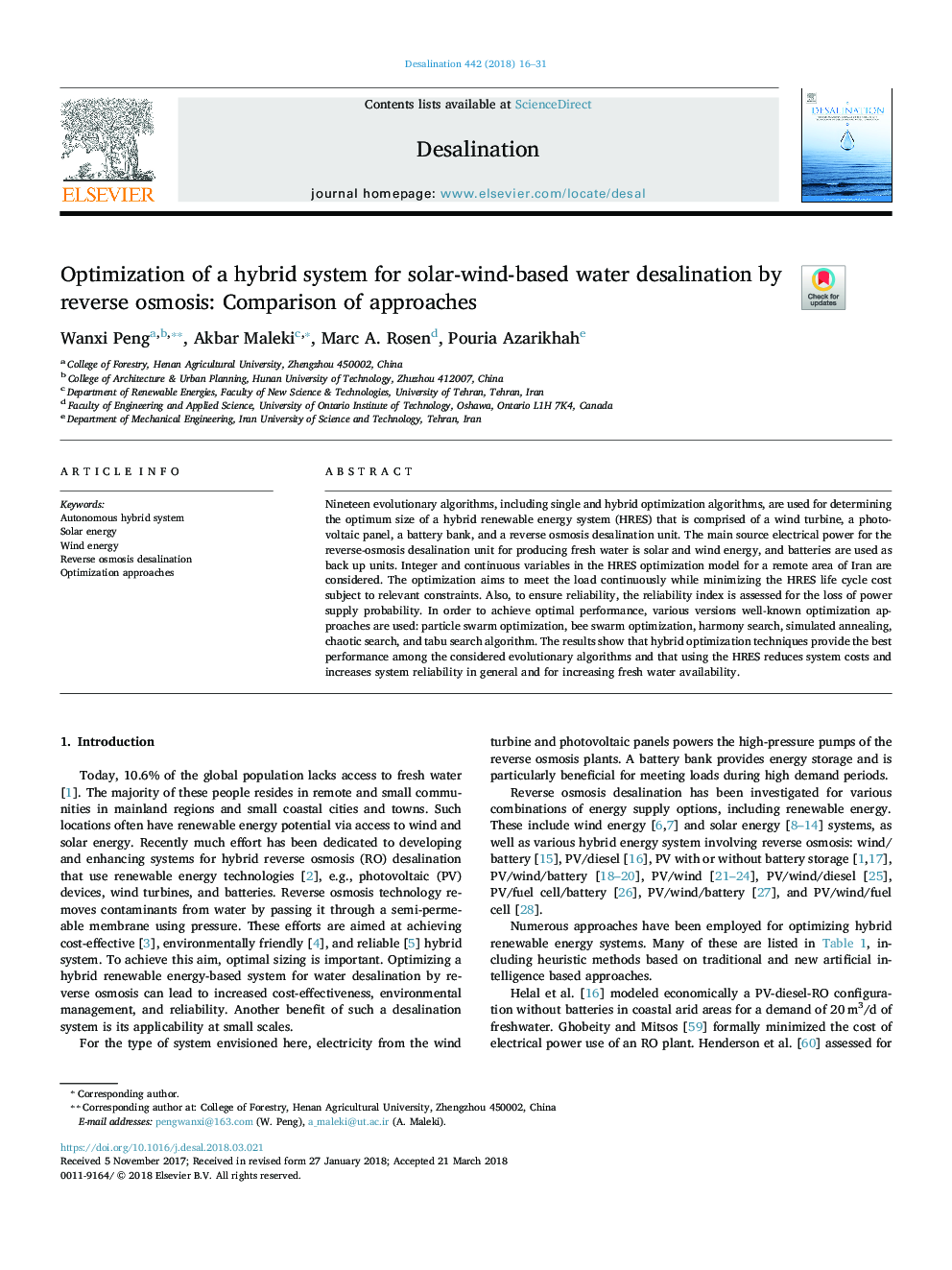| Article ID | Journal | Published Year | Pages | File Type |
|---|---|---|---|---|
| 7007721 | Desalination | 2018 | 16 Pages |
Abstract
Nineteen evolutionary algorithms, including single and hybrid optimization algorithms, are used for determining the optimum size of a hybrid renewable energy system (HRES) that is comprised of a wind turbine, a photovoltaic panel, a battery bank, and a reverse osmosis desalination unit. The main source electrical power for the reverse-osmosis desalination unit for producing fresh water is solar and wind energy, and batteries are used as back up units. Integer and continuous variables in the HRES optimization model for a remote area of Iran are considered. The optimization aims to meet the load continuously while minimizing the HRES life cycle cost subject to relevant constraints. Also, to ensure reliability, the reliability index is assessed for the loss of power supply probability. In order to achieve optimal performance, various versions well-known optimization approaches are used: particle swarm optimization, bee swarm optimization, harmony search, simulated annealing, chaotic search, and tabu search algorithm. The results show that hybrid optimization techniques provide the best performance among the considered evolutionary algorithms and that using the HRES reduces system costs and increases system reliability in general and for increasing fresh water availability.
Related Topics
Physical Sciences and Engineering
Chemical Engineering
Filtration and Separation
Authors
Wanxi Peng, Akbar Maleki, Marc A. Rosen, Pouria Azarikhah,
